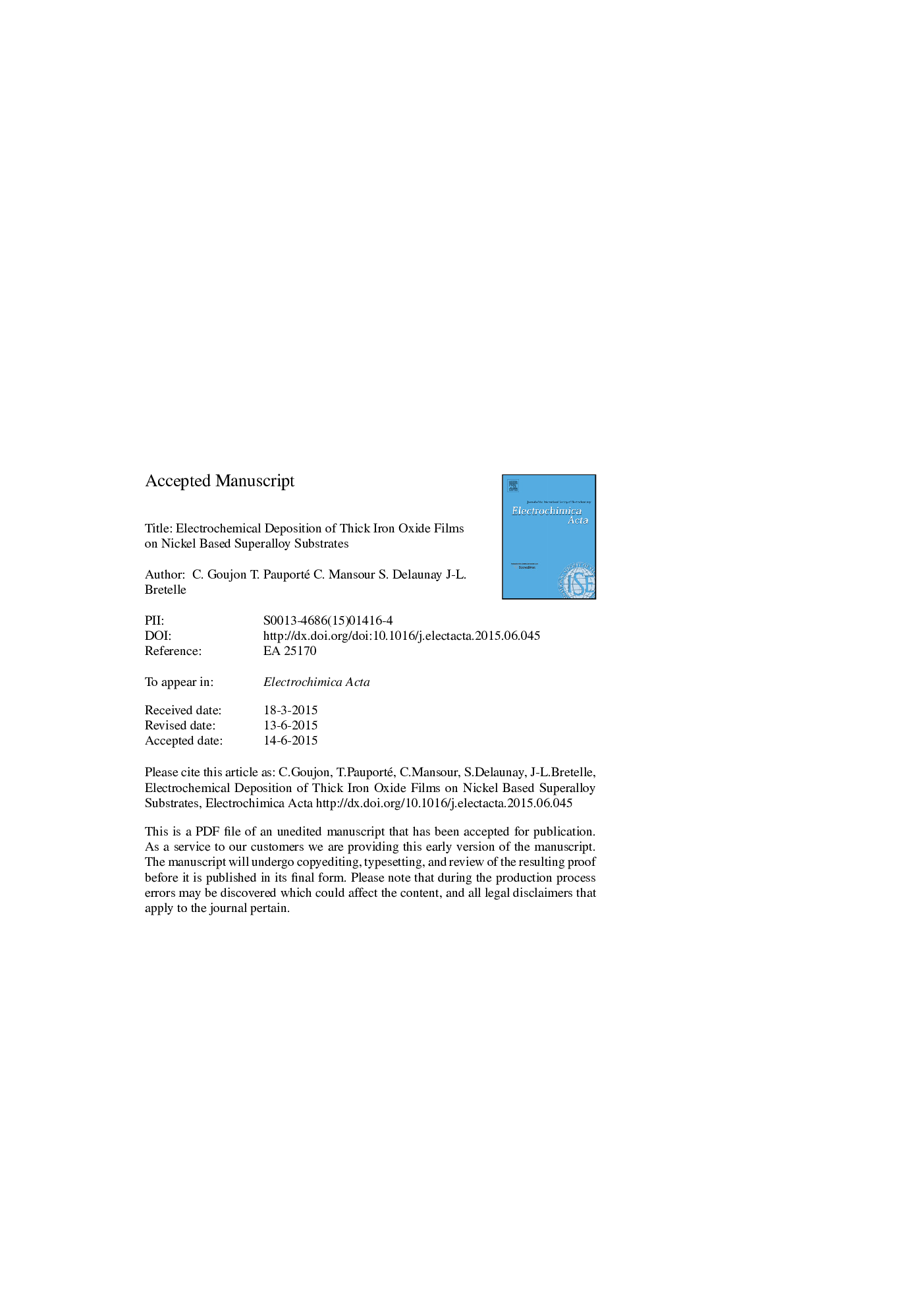| Article ID | Journal | Published Year | Pages | File Type |
|---|---|---|---|---|
| 6610840 | Electrochimica Acta | 2015 | 32 Pages |
Abstract
Iron oxide films have been grown on two nickel-chromium-based superalloys, Inconel 600 and 690, by cathodic electrodeposition from an alkaline Fe(III)-Triethanolamine electrolytic solution. The deposition mechanism has been studied by combining thermodynamic calculations, linear sweep voltammetry and the quartz crystal microbalance techniques. Films have been grown at constant potential ranging between â1.01 and â1.30 V versus the saturated calomel electrode (SCE). They have been thoroughly characterized by scanning electron microscopy, focused ion beam, magnetometry and X-ray diffraction. Magnetite (Fe3O4) is deposited between â1.01 and â1.09 V vs. SCE. Between â1.10 and â1.20 V vs. SCE a dual layered structure composed of a dense inner layer and a porous outer thick layer is obtained. These duplex structures are shown to be mainly composed of magnetite and contain some maghemite. Below â1.20 V vs.SCE, a dense metallic iron layer is deposited. We have defined experimental protocol parameters to grow dense, highly crystallized, adhesive, magnetite films with controlled thicknesses up 50 μm. These magnetite films show a high saturation magnetization of 91.6 emu gâ1 and a small coercivity of 40 Oe.
Related Topics
Physical Sciences and Engineering
Chemical Engineering
Chemical Engineering (General)
Authors
C. Goujon, T. Pauporté, C. Mansour, S. Delaunay, J-L. Bretelle,
